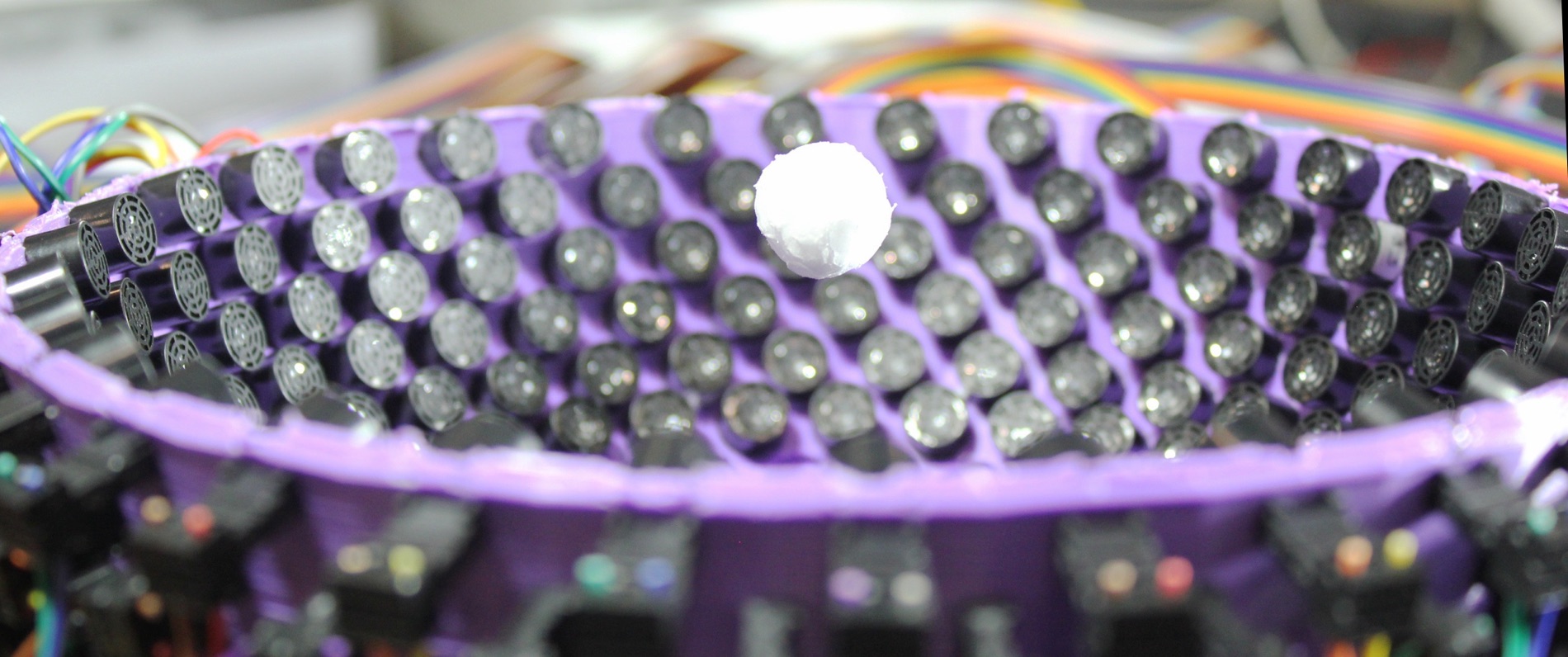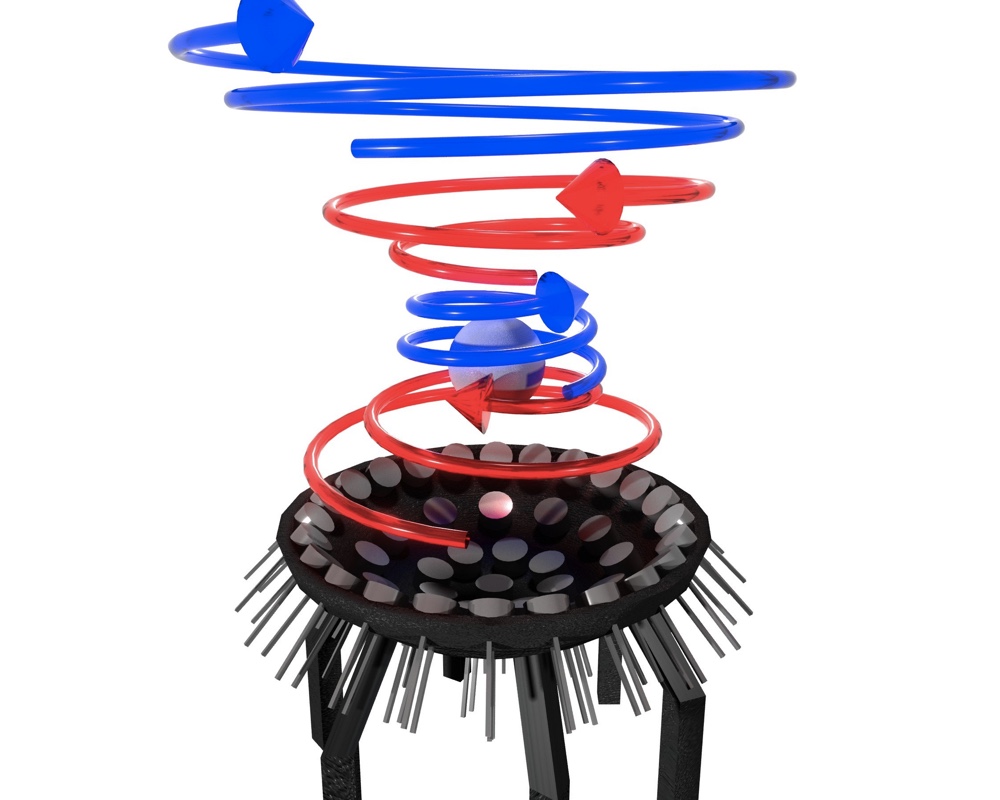Tractor Beam Levitates Large Orbs with Sound

A new "tractor beam" can levitate large objects in midair, using only sound.
So far, researchers have floated spheres as large as 0.6 inches (16 millimeters) in diameter and moved orbs as large as 0.8 inches (2 cm) on a tabletop using tornadoes of sound waves. Theoretically, vortices made by an array of 200 speakers by 200 speakers could hold up objects as large as 31 inches (80 cm) in diameter.
"This is new to acoustics," said study co-author Mihai Caleap, a senior research associate in engineering at the University of Bristol in England. [Science Fact or Fiction? The Plausibility of 10 Sci-Fi Concepts]
Splitting force and momentum
Levitating objects with sound is not new, but the size of the objects has long been limited: the object being levitated could not be larger than the wavelength of the sound waves holding it up. This was true even in one of the strongest sources of levitation from a single source of sound waves, acoustic vortices. Imagine a tornado of rushing wind with a quiet spot in its center; the same funnel shape can be formed with sound waves. The problem, Caleap told Live Science, is that the waves transfer some of their rotational forces onto the object sitting in the quiet spot.
"You transfer momentum to the object, so the object spins," he explained. That spin makes the object so unstable that it might shoot right out of the center of the sound vortex, a problem that becomes more pronounced the larger the object is.
Caleap and his team solved this problem by finding a way to control the acoustic force that holds the object in place separately from the rotational force (known as the orbital angle of momentum). To do this, they rapidly switched the sound vortex back and forth between spinning counterclockwise and spinning clockwise. Instead of a tornado, the motion was more like an ultrafast washing-machine basket (if washing-machine baskets were made of sound).

The fast-switching motion means that the acoustic force stays stable even as the orbital angle of momentum changes, the researchers said. Instead of the orbital angle of momentum limiting the size of the object that can be levitated, the only limitation is the amount of power one can pump into acoustic waves.
Get the Space.com Newsletter
Breaking space news, the latest updates on rocket launches, skywatching events and more!
Drug delivery and contact-free assembly
To make the sound waves, Caleap and his team built a single-source, circular array of transducers, or speakers, that generate ultrasound that's too high in frequency for the human ear to detect. The largest array they built had 192 transducers total and could trap particles up to 0.6 inches (1.5 cm) in diameter.
A 2-meter by 2-meter array of 40,000 transducers total could levitate an object nearly a meter (nearly 39 inches) across, Caleap said, but that is, for now, theoretical. The major applications of acoustic levitation are more likely to be small than large, he said. One possibility, Caleap said, is that sound waves could be beamed inside the body to move around kidney stones or to direct a capsule of pharmaceuticals to the right place.
"Acoustic tractor beams have huge potential in many applications," study supervisor Bruce Drinkwater, a professor of ultrasonics at the University of Bristol, said in a statement. "I'm particularly excited by the idea of contactless production lines where delicate objects are assembled without touching them."
The research was published online Jan. 22 in the journal Physical Review Letters.
Original article on Live Science.
Join our Space Forums to keep talking space on the latest missions, night sky and more! And if you have a news tip, correction or comment, let us know at: community@space.com.

Stephanie Pappas is a contributing writer for Space.com sister site Live Science, covering topics ranging from geoscience to archaeology to the human brain and behavior. She was previously a senior writer for Live Science but is now a freelancer based in Denver, Colorado, and regularly contributes to Scientific American and The Monitor, the monthly magazine of the American Psychological Association. Stephanie received a bachelor's degree in psychology from the University of South Carolina and a graduate certificate in science communication from the University of California, Santa Cruz.










